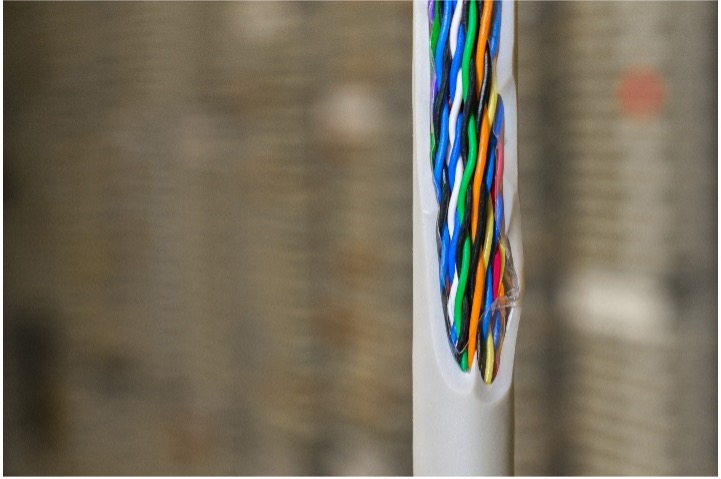Your Pain Relief Plan Part 3
In parts 1 and 2 of this pain relief series:
Your Pain Relief Plan Introduction
I discussed why we feel pain and how the degree of pain felt due to lifestyle factors could vary widely from one individual to the next. Also, when long term, typically over 3 months, the brain would effectively lock the pain in. Emotional trauma, even as far back as childhood, had been found to lock in pain for almost a lifetime.
I then went into more detail about how pain works and discussed the implications of ageing and the differences between acute and chronic conditions, and the most effective ways of treating these.
With this as a background, we will now explore the causes of nerve-related neuropathic pain and how it gets locked into the body. This in turn clarifies why exercise and /or some drugs may not be the correct pain relief solution when suffering neuropathic pain.
 We have explained that the pain signal is passed through the nervous system up to the brain. As an analogy of a nerve cord, imagine a tight bundle of tiny electrical wires and that each one of these wires is connected to a specific part of the body. Imagine, as an example, an injury and inflammation to your foot and that one such ‘wire’ is connected to a very small part of that injured area. It will send a pain signal to the brain, and of course, the brain knows exactly where the wire is connected in the body. The result is you will feel pain in your foot.
We have explained that the pain signal is passed through the nervous system up to the brain. As an analogy of a nerve cord, imagine a tight bundle of tiny electrical wires and that each one of these wires is connected to a specific part of the body. Imagine, as an example, an injury and inflammation to your foot and that one such ‘wire’ is connected to a very small part of that injured area. It will send a pain signal to the brain, and of course, the brain knows exactly where the wire is connected in the body. The result is you will feel pain in your foot.
Now let’s go one stage further. That nerve bundle travels down your spine until it reaches the point at which it exits the spinal cord and passes down your leg to your foot. Imagine I could find that exact same wire in your spine. If I were to squeeze it, your brain would interpret that as a pain signal linked to your foot. You would feel exactly the same foot pain, but the problem this time is in your back. You may or may not have a real problem in your foot, but you would still feel pain in your foot.
Long-term pressure on a nerve will cause it to become super-sensitive and send pain signals even when there is no injury
Now, let’s go another stage further again. Imagine that nerve in your spine had previously been strangled for a period of time by a tight muscle contracture. Extended pressure on a nerve will cause it to function incorrectly and it will become ‘super-sensitive ’. That nerve will now send pain signals to the brain even when there is no current injury. In effect, the previous injury is locked in. Imagine a faulty wire having a similar effect.
’. That nerve will now send pain signals to the brain even when there is no current injury. In effect, the previous injury is locked in. Imagine a faulty wire having a similar effect.
Pain like this is called neuropathic pain because the nerve is super-sensitive.
The Do’s and Don’ts of Exercise
It’s not necessarily the case that exercises are appropriate at the start of treatment, as in some cases exercises, incorrectly timed, will make matters worse, not better. Neuropathic pain resulting from a trapped nerve is an example where exercises should not be given until the trap has been removed, allowing the nerve to move freely.
As an analogy, imagine I grabbed your wrist so hard that it hurt. Your reaction might be to try to pull your arm and wrist out of my grip. But if my grip is too strong, all that will happen is that your arm will ache and your wrist will be very sore. Yanking on a trapped nerve by exercising will have the same result. Exercise prescription needs to wait until the nerve is no longer trapped.
The Pro’s and Cons of Pain Medication
Pain may be a signal that something is wrong, but at best it’s not pleasant and at worst it can prevent normal daily living. If long term, it can cause depression and a loss of will to live. Thus, medication is an important part of our arsenal to control the pain until the cause of the pain has been established and then successfully treated.
There are, however, downsides to medication. The first and most obvious is that the medication works by masking or blocking the pain signals and does not treat the actual cause of the pain. Further, by masking the pain, it prevents us from getting the warning that something is wrong. Thus, we may continue to do the very things that the pain is trying to warn us not to do. If used long term, medication may, as a consequence, exacerbate the problem.
Opioids are ineffective in treating chronic pain
Secondly, when the pain level is severe, opioid based drugs are often prescribed, with no differentiation between acute and chronic conditions. The problem here is that chronic conditions will most likely need long term medication and opioids are naturally addictive. In fact, so much so, that opioids have caused the majority of drug addictions in the USA. To make matters worse, opioids have been recognised for some time as being ineffective in treating chronic conditions.
Thirdly, most drugs have negative side effects and long-term use can be dangerous.
To summarise, trapped nerves will cause neuropathic pain, a form of locked in pain which in itself can be misleading, as incorrect diagnosis could lead to treatment of where the pain is perceived, instead of where the cause of the problem resides.
It thus should come as no surprise that exercising, which will mean pulling on nerves to allow movement, will only make matters worse if those nerves are trapped.
Drugs are an effective short term solution, but care should be taken to avoid opiates when dealing with chronic conditions, as it is well proven that opiates are ineffective in such cases.
In the next part of this pain relief series Your Pain Relief Plan Part 4 I will discuss the assessment and the scientifically proven importance of holistic factors.
Call 01889 881488 Now
p.s. Don’t try to book online at this time as that is only suitable for existing clients already being treated for an existing problem.
